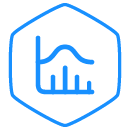Central Monitoring
Integrated Quality Risk Management to Reduce Risk and Optimize Resources
Reduce Risk With a Fit-For-Purpose Central Monitoring Approach
At Premier Research, we deliver a fit-for-purpose central monitoring strategy that reduces risk, enhances patient safety, and optimizes resources in clinical trials. Our integrated approach to quality risk management combines Central Monitoring and Risk-Based Monitoring (RBM) to ensure high-quality data and informed decision-making while fully aligning with ICH GCP recommendations.
We prioritize near real-time data review, enabling our Central Monitors (CMs) to quickly identify insights into site performance, data integrity and patient safety. This allows Clinical Research Associates (CRAs) to focus on high-priority targeted issue investigation, review of site processes and site management activities, streamlining oversight and improving efficiency and site quality.
A Blueprint for Risk Assessment, Mitigation, and Reporting
Every study at Premier Research follows a customized, integrated quality risk management strategy that includes:
1. Risk Assessment
Our Central Risk Managers collaborate cross-functionally—with project managers, medical monitors, clinical leads, biostatisticians, and data managers—to identify potential protocol execution and operational risks. We focus on critical to quality factors essential for quality and compliance.
2. Risk Mitigation & Planning
We proactively manage risks through tailored mitigation strategies for each function, documented in project plans and continuously monitored and updated throughout the trial.
3. Risk Communication & Reporting
Project managers lead regular cross-functional meetings to keep sponsors informed of risk trends, mitigation strategies, and mitigation effectiveness. In addition to incorporating new risk mitigations for emergent risks and issues, we document decisions in our Remarque CTMS, ensuring transparency and continuous risk oversight.
Central Monitoring
The foundation of our monitoring and mitigation strategies is the use of Central Monitoring performed by our Central Monitors (CMs). Our CMs leverage Premier Research’s Remarque platform to conduct a “near real-time” review of study-specific visualizations, analyses, and logic checks, ensuring early detection of data quality or safety concerns.
- Patient-Level Data Reviews: Ensuring eligibility, early identification of protocol deviations and safety risks, and early detection of data discrepancies, while minimizing the need for frequent on-site monitoring.
- Key Risk Indicators: Analyzing site performance across metrics like enrollment, screen failure rates, protocol deviations, and adverse event reporting to prioritize CRA oversight.
- Study-Level Analysis and Trending: Monitoring study and site level trends related to protocol endpoints, participant safety, eligibility, investigation product (IP) compliance and assessing study risks through robust study- and site-level reporting.
- Quality Tolerance Limits (QTLs): Setting predefined thresholds on key parameters for proactive risk control.
- Custom Visualizations: Additional study-specific insights identified during the risk assessment process.
Technology-Enabled, Data-Driven Approach
Premier Research leverages our Remarque Clinical Trial Management System (CTMS) with the integrated Remarque Risk Management and Clinical Analytics Modules for seamless, end-to-end risk oversight. With data integration from sources like EDC, ePRO, and central labs, our system provides:
- Real-time data review and data interrogation
- Integrated workflows and task management
- Built-in audit trails for full traceability
The Benefits of Premier’s Central Monitoring
- Faster Issue Detection: Identify protocol deviations 20% faster than traditional monitoring.
- Optimized CRA Resources: Enables 60% of monitoring responsibilities to occur centrally, easing industry-wide resourcing challenges.
- Cost Efficiency: Achieves a 5-20% reduction in monitoring costs compared to traditional 100% SDR/SDV.
Ready to optimize your clinical trial monitoring strategy?
Connect with Premier Research to discuss a smarter, risk-based approach to clinical trial oversight.
Agility and knowledge at your fingertips
Resources

7 Reasons to Ditch Traditional Monitoring in Favor of a Centralized Strategy

Data at Your Fingertips: The Case for Centralized Monitoring
resources
Stay ahead of the curve by browsing our extensive library of white papers, case studies, blog posts, and more.






